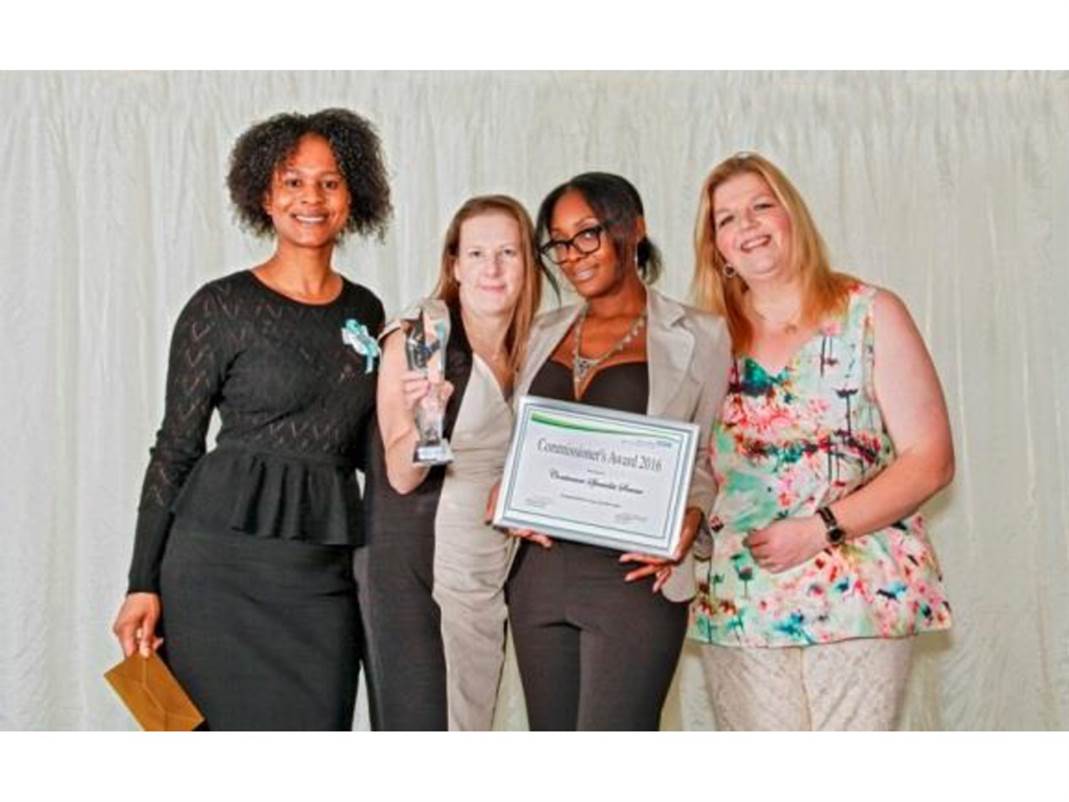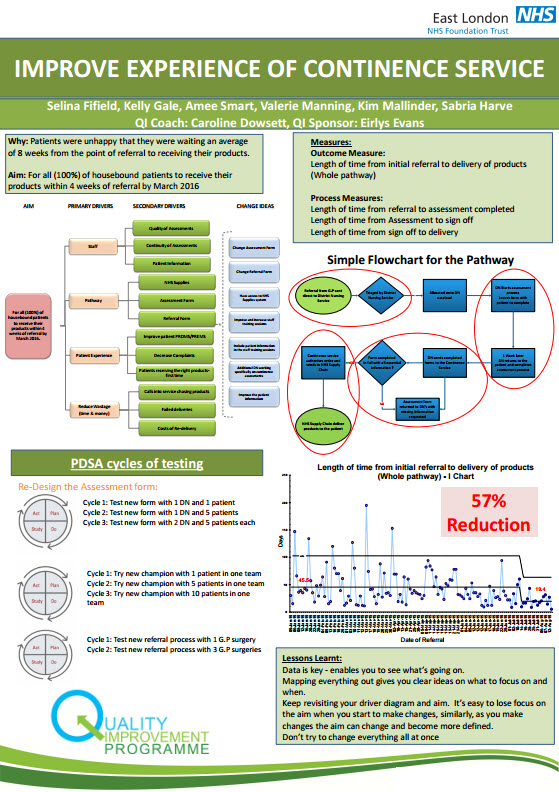
Improving patient experience of the continence service
4th May 2017
 Amee Smart, Administrator at the Enebiri clinic and QI project team member for”Improving the experience of the continence service” spoke to Bernadette about her experiences of QI and the QI project story
Amee Smart, Administrator at the Enebiri clinic and QI project team member for”Improving the experience of the continence service” spoke to Bernadette about her experiences of QI and the QI project story
How did you get involved in quality improvement?
Our manager first brought QI to our attention when we were discussing issues within our operation meetings. I mentioned to her that patients were complaining about the length of time it took to have an initial assessment for incontinence products and delivery of the products to them. The whole process took roughly 8 weeks, sometimes longer; which is a long time to wait for incontinence products. This would have a negative effect on patients’ health and well-being whilst they waited, not to mention anxiety and distress.
Our manager was very keen to improve service delivery, so, I was fortunate to attend Pocket QI training to understand how we could use QI in our work. From all of this we started a QI project aimed at improving the administration process for providing initial assessments and then getting the correct products delivered to patients in a timely manner.
We measured how long it took to complete this process and looked at ways in which we could reduce the time for this process to be completed, improve communication to departments and streamline our existing process.
Tell me about the QI project you were involved with
We were aiming to improve access into our services and to streamline our processes more. We were also keen to increase patient satisfaction with our service. My role was to gather data collected from the types of complaints, such as phone calls, collate the data and from that we were able to see what the pain points were and test changes to make service delivery better.
An example of a change was, we would normally fax a patients prescription which would take 3-5 working days for delivery; instead we got permission to have access to our supply chains database to create online prescriptions. This also helped keep the administrative and assessment process paper light. It also made us more responsive when dealing with enquiries from patients.
We also restructured the assessment form making it less complicated for the clinicians to complete, and stopped giving the charts for the patients to fill out at home (this prolonged the time it took for the assessment to get back into the office which was from the DN feedback).
What results have you seen?
The changes made resulted in a reduction of waiting times from assessment to delivered prescriptions from 45 days to 20. It has further resulted in reducing patient complaints; greater access to shared database systems and less administrative time wasted.
How has this impacted your daily work?
This project has reduced the calls that have been wasted chasing assessments. Having access to our suppliers database means we can manage patient’s products more efficiently making the enquiries less complicated to manage. There has also been improved moral amongst the team; we are enjoying work now, whereas before it was quite demoralising constantly trying to fight fires and follow a complicated system where communication and processes weren’t transparent and didn’t work together.
What captivated you about quality improvement?
It was an opportunity for me to actively get involved in designing and implementing robust systems to improve outcomes in my own work. At the time there was very little clarity in regards to how things we being done and no set processes, QI helped us map out what we wanted to achieve and gave us the tools to make small changes and test them out. I liked how using qualitative data we could measure improvement, and we continue to do so through patient feedback. Personally, I am results driven and enjoy problem solving, so having tools to help me do that was brilliant. It was exciting to see whether changes made had a positive effect on the data we gathered, watching the data change over time was also exciting!
How has being involved in QI benefited you personally?
It has given me an opportunity to better manage my work load from an operational point of view. I feel that sometimes the administration side of work falls only on staff members within that role e.g. Administration lead. The project helped show what we do in admin to the wider team. I also got to work alongside colleagues more closely, which has helped gel us together more. By doing the project we now understand each other’s roles more and also what issues administrators as front line staff see and deal with on a day to day basis. I have felt empowered and able to make a difference; the changes to our process for assessment and delivery of continence products have come from myself and colleagues from the front line, as we see the issues that arise on a day to day basis.
What advice would you give to anyone unsure of using QI to improve their work?
If there are any issues that need to be addressed in a service, I think using QI as a way to make any changes is really valuable; it allows you to break things down in a way that is measurable, make small changes to a complicated system and monitor the success before rolling the changes out more widely.
The continence service QI project team received ‘The Commissioner’s Award’ at the 2016 ELFT Staff Awards
Learn more about the project on the team’s poster shared at the 2016 ELFT QI Conference
Most Read Stories
-
Why is Quality Control important?
18th July 2018

-
An Illustrated Guide to Quality Improvement
20th May 2019

-
2016 QI Conference Poster Presentations
22nd March 2016
-
Recognising Racism: Using QI to Help Take Action
21st January 2021

-
Using data enabled us to understand our problem
31st March 2023

-
QI Essentials: What does a Chief Quality Officer do?
18th March 2019


Follow QI on social media
To keep up to date on the latest concerning QI at ELFT, follow us on our socials.




